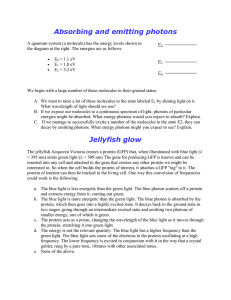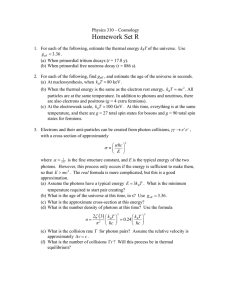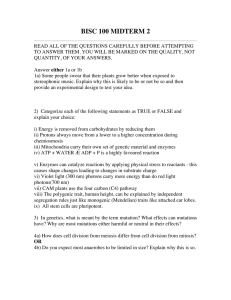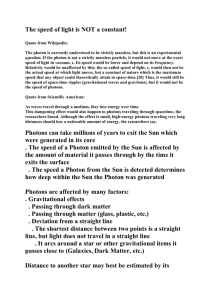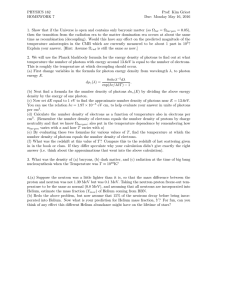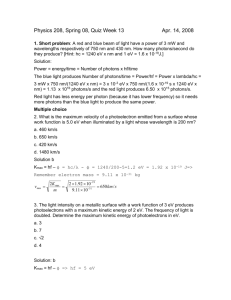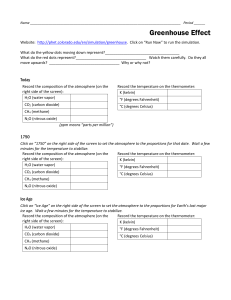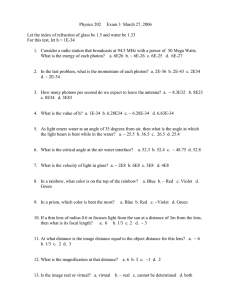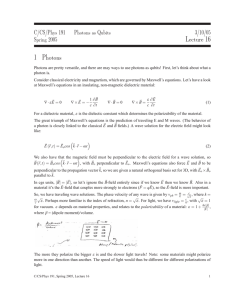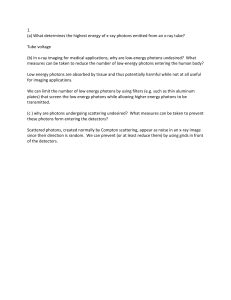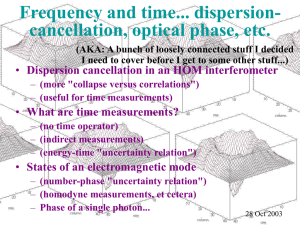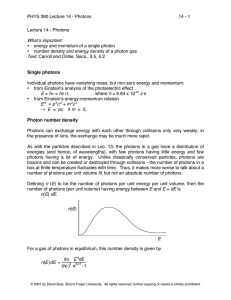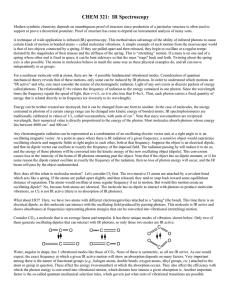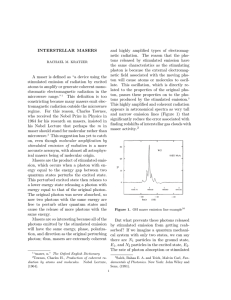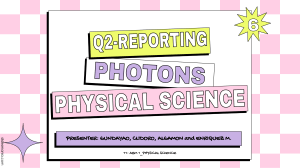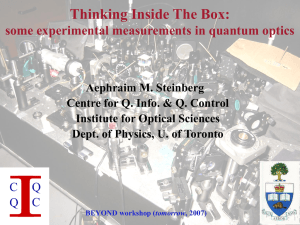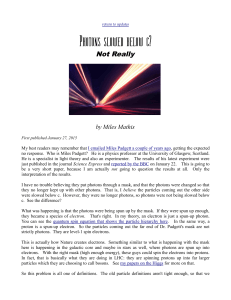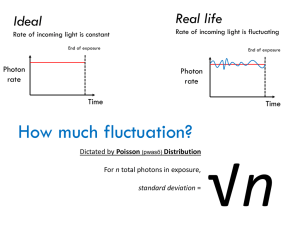MASERS
advertisement
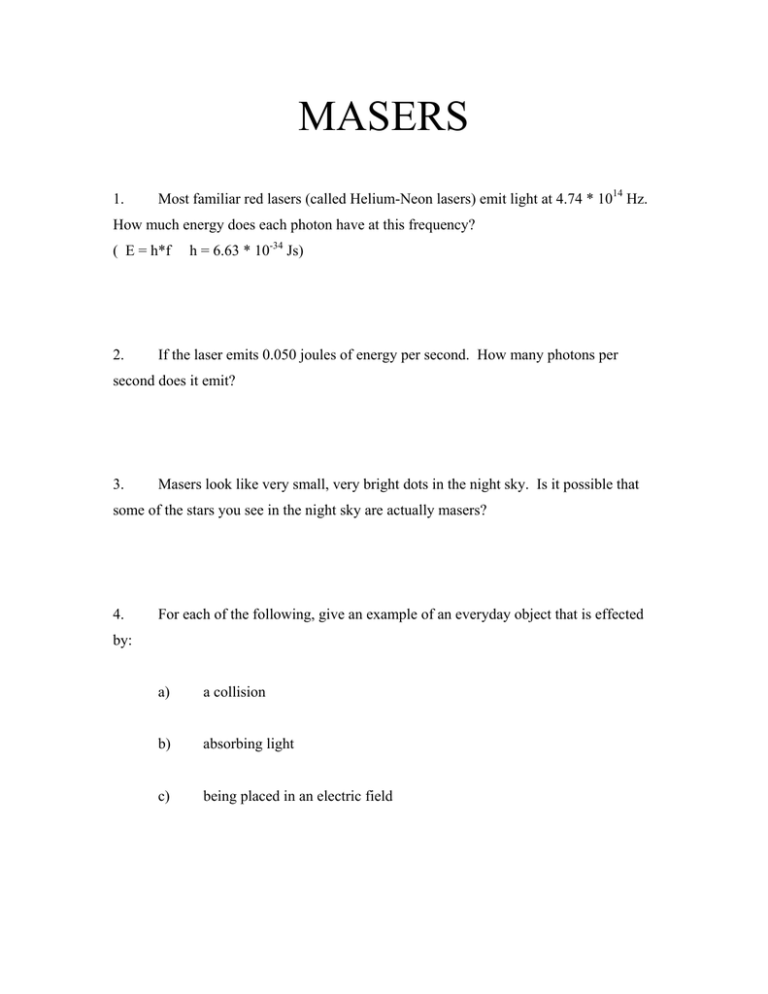
MASERS 1. Most familiar red lasers (called Helium-Neon lasers) emit light at 4.74 * 1014 Hz. How much energy does each photon have at this frequency? ( E = h*f 2. h = 6.63 * 10-34 Js) If the laser emits 0.050 joules of energy per second. How many photons per second does it emit? 3. Masers look like very small, very bright dots in the night sky. Is it possible that some of the stars you see in the night sky are actually masers? 4. For each of the following, give an example of an everyday object that is effected by: a) a collision b) absorbing light c) being placed in an electric field 5. A photon is sent into a region and produces a maser. After one generation, it has stimulated the emission of one more photon. There are now a total of two photons. After two generations, there are a total of four photons. After three generations, there are a total of eight photons. (Refer to the slide with the stimulated emission animation) a) How many photons are there after 5 generations? b) Write an equation relating the number of the generation and the number of photons emitted. 6. Use http://chemfinder.cambridgesoft.com/ to draw a structure for each of the following chemicals. a) Hydroxyl (OH) b) Formaldehyde (H2CO) c) Ammonia (NH3) d) Hydrogen Cyanide (HCN) e) Water (H2O) f) Silicon Monoxide (SiO) g) Methanol (CH3OH)



